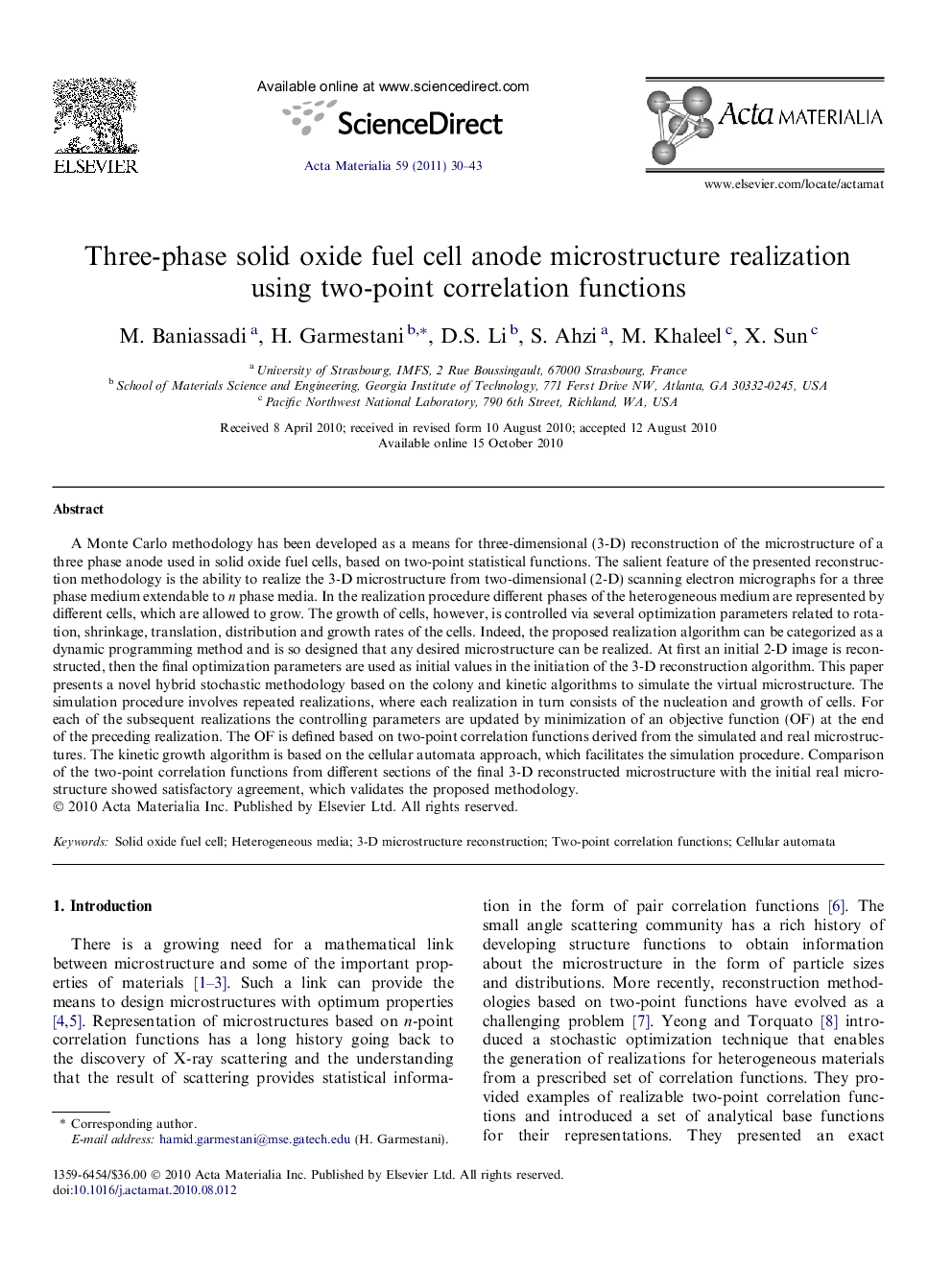| Article ID | Journal | Published Year | Pages | File Type |
|---|---|---|---|---|
| 1447818 | Acta Materialia | 2011 | 14 Pages |
A Monte Carlo methodology has been developed as a means for three-dimensional (3-D) reconstruction of the microstructure of a three phase anode used in solid oxide fuel cells, based on two-point statistical functions. The salient feature of the presented reconstruction methodology is the ability to realize the 3-D microstructure from two-dimensional (2-D) scanning electron micrographs for a three phase medium extendable to n phase media. In the realization procedure different phases of the heterogeneous medium are represented by different cells, which are allowed to grow. The growth of cells, however, is controlled via several optimization parameters related to rotation, shrinkage, translation, distribution and growth rates of the cells. Indeed, the proposed realization algorithm can be categorized as a dynamic programming method and is so designed that any desired microstructure can be realized. At first an initial 2-D image is reconstructed, then the final optimization parameters are used as initial values in the initiation of the 3-D reconstruction algorithm. This paper presents a novel hybrid stochastic methodology based on the colony and kinetic algorithms to simulate the virtual microstructure. The simulation procedure involves repeated realizations, where each realization in turn consists of the nucleation and growth of cells. For each of the subsequent realizations the controlling parameters are updated by minimization of an objective function (OF) at the end of the preceding realization. The OF is defined based on two-point correlation functions derived from the simulated and real microstructures. The kinetic growth algorithm is based on the cellular automata approach, which facilitates the simulation procedure. Comparison of the two-point correlation functions from different sections of the final 3-D reconstructed microstructure with the initial real microstructure showed satisfactory agreement, which validates the proposed methodology.
